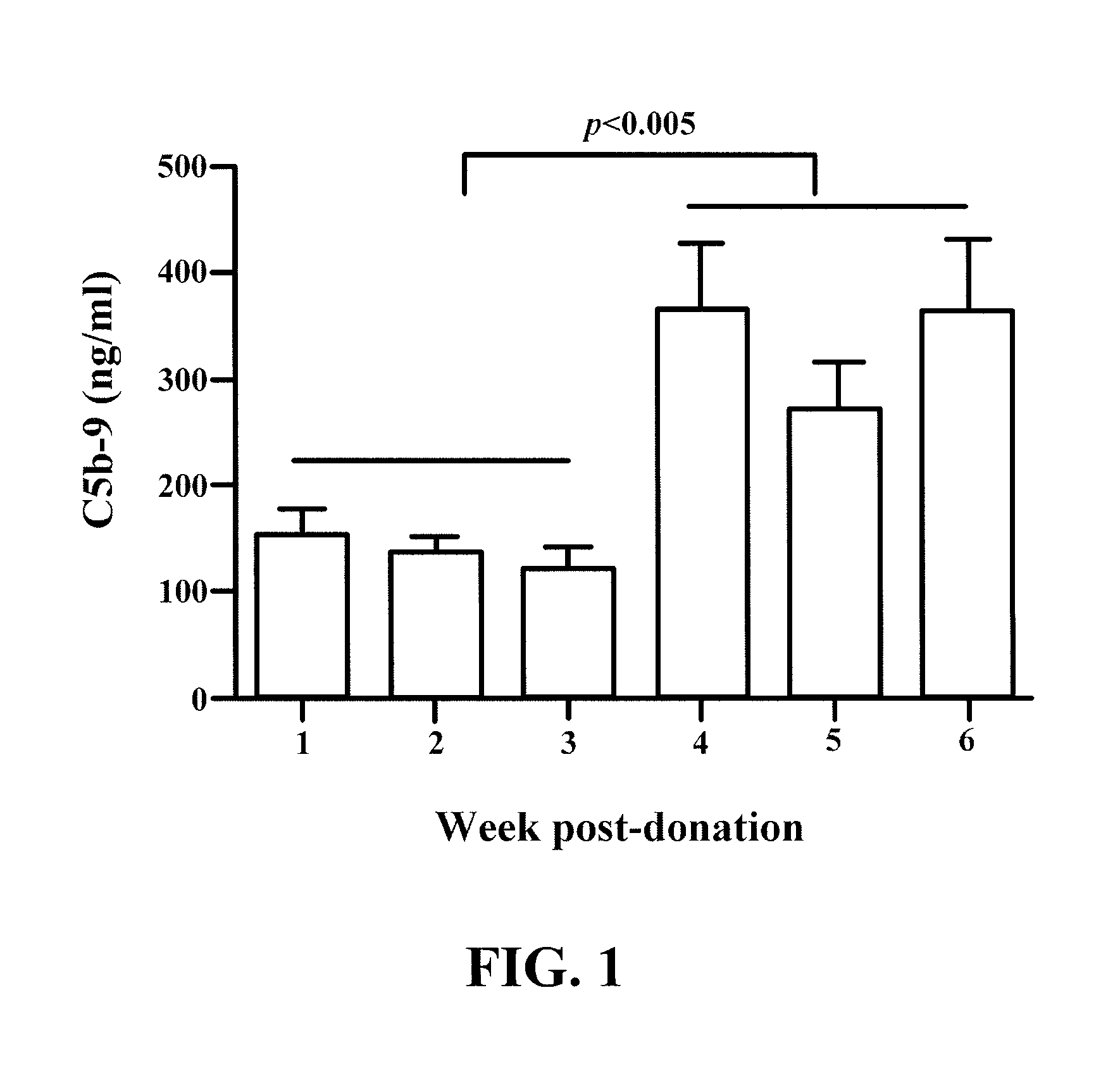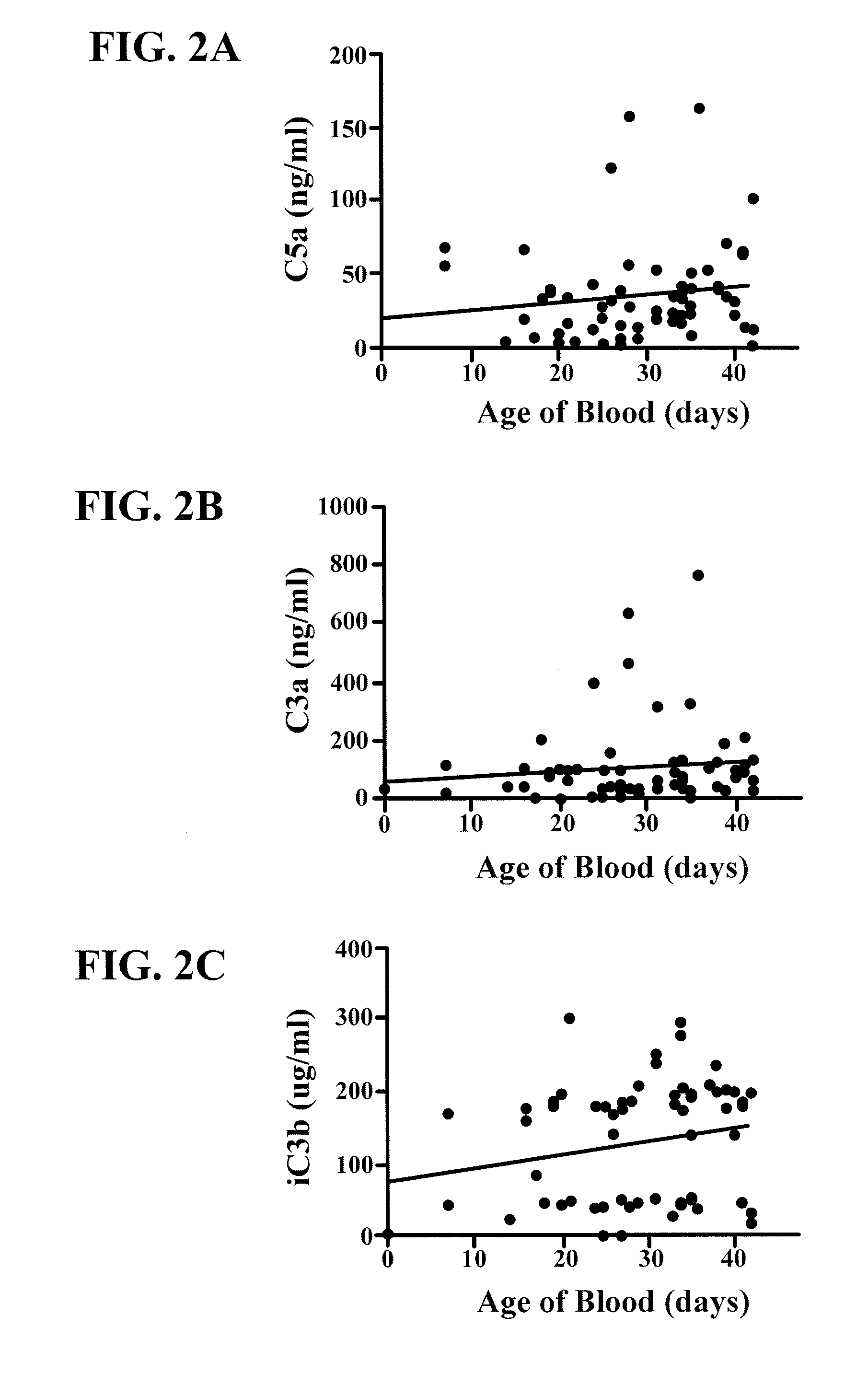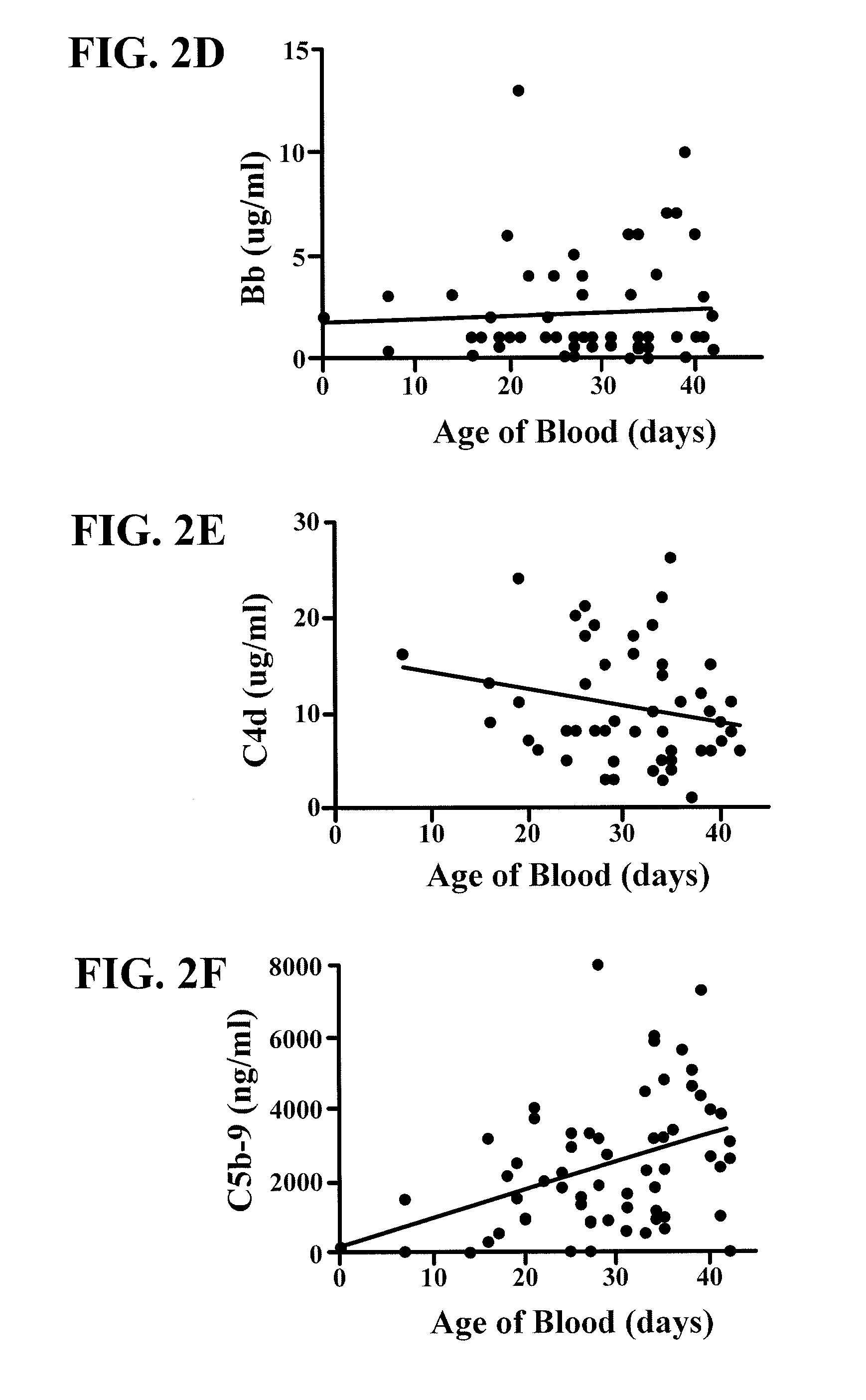Anti-complement therapy compositions and methods for preserving stored blood
a technology of anti-complement therapy and composition, applied in the field of red blood cell storage, can solve the problems of killing or damageing the pathogen or cell, and achieve the effect of preventing the formation of a new pathogen or cell
- Summary
- Abstract
- Description
- Claims
- Application Information
AI Technical Summary
Benefits of technology
Problems solved by technology
Method used
Image
Examples
example 1
Identification of Complement Activation During Red Blood Cell Storage
[0047]For some studies, “pigtails” of human blood, stored for one through six weeks, were assayed using the C5b-9 (MAC) ELISA (Quidel Corp.) for changes in the level of fluid-phase MAC. In the first three weeks post-donation, MAC levels were low and not significantly different. At week four, fluid-phase MAC levels increased significantly (p<0.005, Students t-test) and stayed elevated through six weeks post donation. RBC stored according to UAB blood banking conditions for one to six weeks were assayed for C5b-9 by solid-phase ELISA. Data shown in FIG. 1 are the mean + / −SEM of 7 to 12 samples per time point. The studies shown in FIG. 1 suggest that treatment of packed RBCs with an antibody to C9 to inhibit formation of the MAC may prevent insertion of fluid-phase MAC into RBC membranes and reduce or prevent hemolysis.
[0048]In other studies, a cross-sectional analysis was performed of aliquots of leukoreduced RBC uni...
example 2
Addition of Anti-C9 Antibody Markedly Prevents Accumulation of Cell-Free Hemoglobin in Stored RBC
[0050]Red blood cells stored for seven days according to UAB blood banking conditions were either untreated or treated with purified rabbit anti-C9 IgG (100 μg) and then stored for a total of 42 days. At days 7, 14, 28 and 42, aliquots were removed and assayed for cell-free hemoglobin. Data shown in FIG. 3 are the mean + / −SEM for 3 samples per group. These data suggest that inhibition of C9 via anti-C9 antibody or through other means of blocking formation of the MAC may significantly reduce RBC hemolysis and extend the storage time of RBCs for transfusion. This would increase the usable blood supply for transfusion and may also reduce transfusion-related toxicity.
PUM
| Property | Measurement | Unit |
|---|---|---|
| temperature | aaaaa | aaaaa |
| temperature | aaaaa | aaaaa |
| temperature | aaaaa | aaaaa |
Abstract
Description
Claims
Application Information
 Login to View More
Login to View More - R&D
- Intellectual Property
- Life Sciences
- Materials
- Tech Scout
- Unparalleled Data Quality
- Higher Quality Content
- 60% Fewer Hallucinations
Browse by: Latest US Patents, China's latest patents, Technical Efficacy Thesaurus, Application Domain, Technology Topic, Popular Technical Reports.
© 2025 PatSnap. All rights reserved.Legal|Privacy policy|Modern Slavery Act Transparency Statement|Sitemap|About US| Contact US: help@patsnap.com



